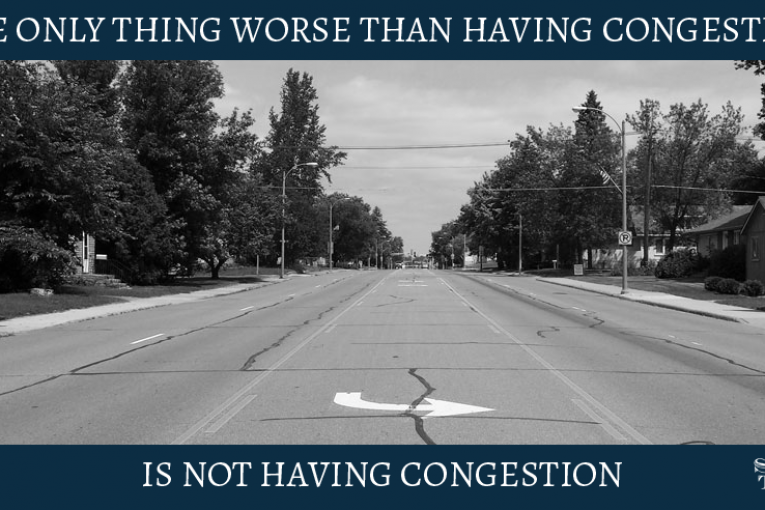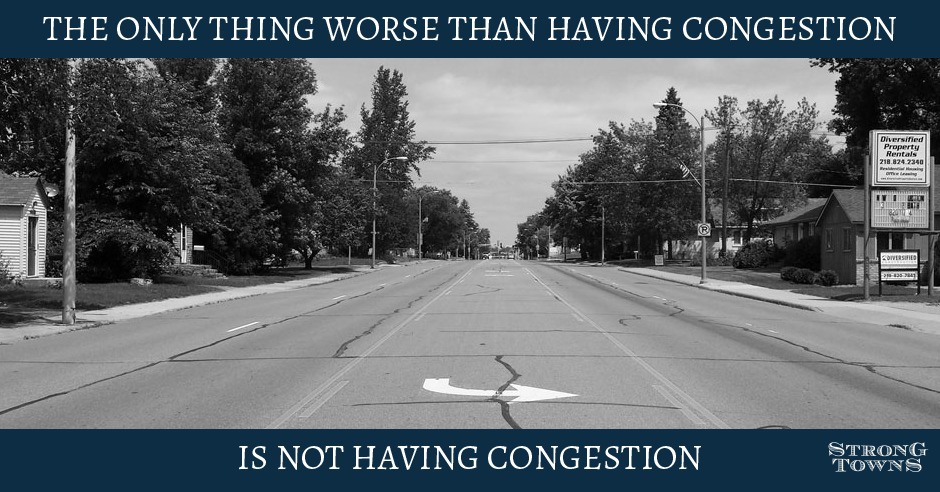

By Alan Hirsch
Charles Marohn, a nationally known city planner and transportation engineer, will be giving a presentation in Davis on Friday, January 22, at 10 AM. His talk entitled, “Growing Cities for Financial and Neighborhood Sustainability,” will be held in the City Hall Chambers and is open to the public. Marohn is known for his exciting TEDx-style talks that give listeners new insight into their cities.
Charles Marohn, Jr., AICP, is president of Strong Towns, a nonprofit dedicated to helping America’s towns achieve financial strength and resiliency. He is the author of Thoughts on Building Strong Towns, Vol. 1, the primary author of the Strong Towns blog, and the host of the Strong Towns podcast.
The talk is especially timely, with the city of Davis forecasting long-term budget problems and now considering how it might grow in new ways to generate new tax revenue – while not assuming significant new costs or harming existing neighborhoods. Transportation costs, and the money cities need to maintain them, is always on Davis’ list of sustainability challenges – as the recent tax increase to pay for road maintenance illustrates, and the low rating of Davis’ pavement condition compared to other places. Mr. Marohn will discuss how the amount of feet of roads per capita is baked into a city’s design and how this affects a city’s sustainability.
Charles Marohn also considers congestion from a unique standpoint: that a busy street (versus a busy arterial road or highway) might actually be a sign of a community doing the right thing. He has many other provocative observations about the way cities work that are sure to challenge existing notions.
Marohn is in Northern California helping Santa Rosa develop a consensus about how the city can grow while maintaining fiscal sustainability. He is partnering with Joe Minicozzi, who gave several well-received presentations to Davis leaders, businesses and residents two months ago.
While Minicozzi focuses on the revenue side of a city’s balance sheet – demonstrating how a can city use its planning and zoning powers to assure maximum revenues – Marohn focuses on the cost side. An engineer as well as a planner, he examines how a city can grow in a way to keep its long-term maintenance expenses under control, while protecting neighborhoods and building social connectivity. “People create the value” he argues, so building places that focus on attracting people, not moving cars faster, creates economic activity and thus sustainability.
This is the second in a series of talks by nationally known expects offered by the newly-formed Davis Futures Forum, a collaboration between the City, the University and Davis nonprofit organizations. The purpose is to develop a common language about the issues facing our city so that together we can effectively address our community’s economic, social and environmental challenges. Sponsors include the City of Davis, the Downtown Business Association, Cool Davis, the National Center for Sustainable Transportation, and the UC Davis Departments of Community and Regional Development and Landscape Architecture.


Editor’s note, the article was originally submitted under the wrong byline.
SON OF JOE MINICOZZI
Well said and the inference taken. My feelings exactly.
Isn’t it his partner?
He should love the downtown Davis grid where congestion is epic. Between all the cars, bikes, and pedestrians, as well as delivery trucks, our downtown is often a congestion lover’s dream.
Some interesting articles on his website; for example: http://www.strongtowns.org/journal/2016/1/6/our-old-planning-rules-of-thumb-are-all-thumbs
I love it when ideology attempts to wrap itself in what are fanciful and incomplete economic arguments to appeal to all us realists out there.
As opposed to ideology attempting to wrap itself in fanciful and incomprehensible blog posts?
It looks like Charles Marohn is advocating European type cities with high density housing. It appears that he favors using public transit, and walking versus automobile use. Am I interpreting his message correctly?
Here is my issue.
I think there is too much extremism in this small-dense-city narrative that tends to support a certain ideological view that leads an unsustainable, albeit pleasing, city design. It is kinda’ like thinking Disneyland can be made into a real city. That is fine if you have a lot of toursim.
Of course the key, as in everything, is balance.
Davis is wwwwaaaayyyy out of balance in terms of the amount of land designated and used for business-economic activity. We have much. much too little. And wey have wwwaaaayyyy too many local voters that either don’t get it or want everyone else to ignore it.
A small dense core is fine but only if there are some business parks on the periphery feeding revenue to the city to support spending needs and to provide enough jobs for the residents. The alternative would need to be high-rises in the core.
But we will accept neither.
And yes the transportation infrastucture needs to be robust reguardless… either enough public transportation options or car lanes and parking spaces. That just needs to happen reguardless. And it take money. Money that only local business generates.
There is not a single good example of a sustainable city that is both low-profile and made population-dense by no-growthers excet for those that attract a lot of tourism dollars. The exception would be maybe Washington DC that only works because of the mountains of tax money it sucks from the pockets of working Americans and corporations. But even DC is struggling to some extent. The talk in that town is to allow taller buildings.
But Davis has a problem with respect to the taller building alternative… the core area is too small to accomodate the need. So then we have to grown commercial into the near-core area. And that means displacing some of the most vocal no-growth resident activists in the city. The same people that are the biggest fans of the message of this so called “national expert”.
I don’t buy it.
Maybe you could attend this presentation and write your impressions of it for the Vanguard.
I don’t necessarily disagree, but I’m puzzled by the answer I got to my question about density at MRIC at Wednesday night’s forum. The development team showed two slides relating to Floor Area Ratio (FAR): one without housing and a FAR of 0.5, and one that includes housing and a FAR of 0.82. I asked “Why not do all commercial with a FAR of 0.82,” i.e. put more innovation space on the parcel, i.e. increase the density and thus the tax revenue. The consultant’s response, in a nutshell, was that the region can’t absorb that much innovation space.
So it appears that sometime between the Innovation Task Force recommendations and the MRIC proposal we’ve gone from needing many hundreds of acres of innovation space to being unable to fill 200 acres of very modestly dense innovation space with paying tenants.
Color me confused.